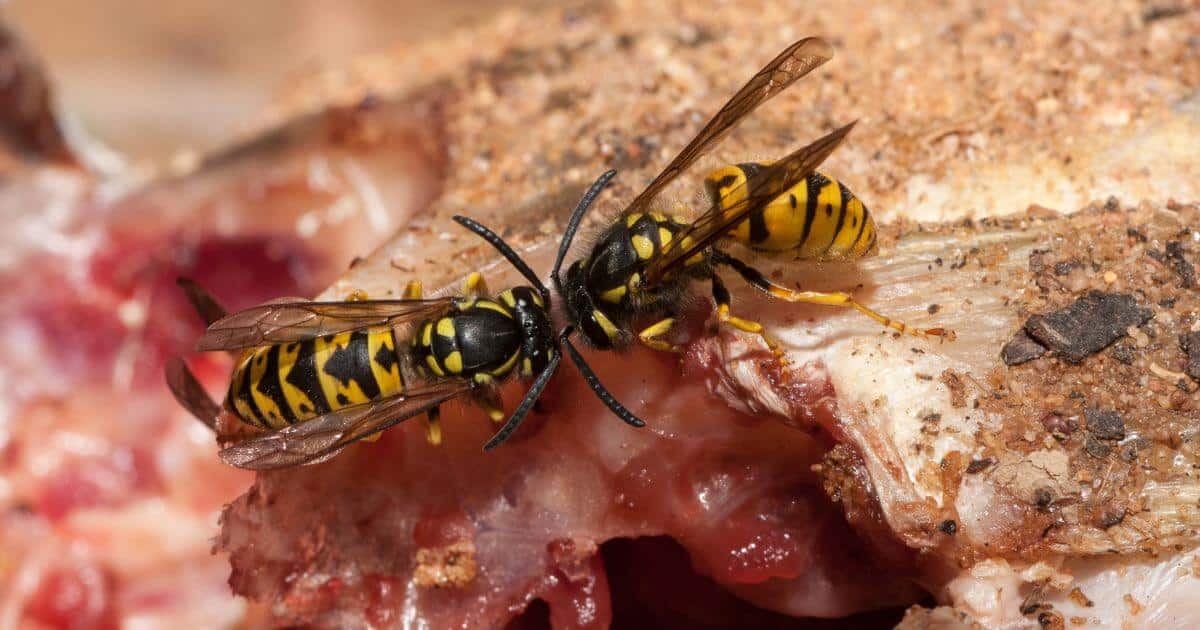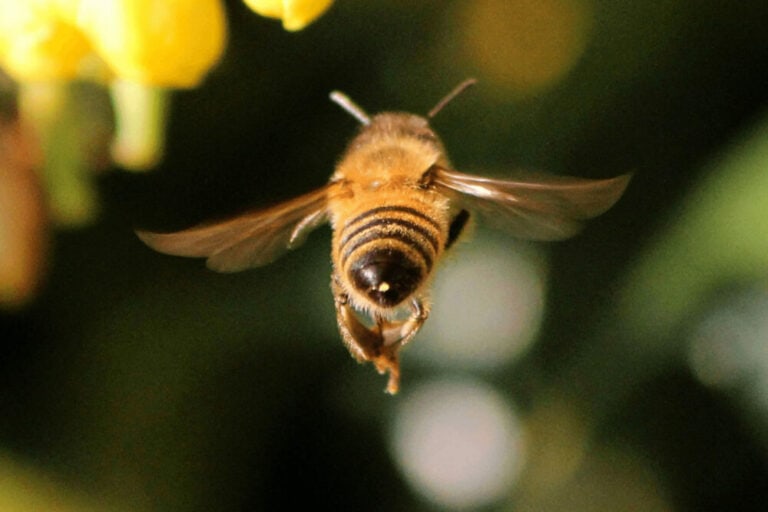European Wasps – A Pest In Melbourne
European Wasps were first discovered in Melbourne in 1977 after being introduced from Tasmania around 1959. They rapidly reproduced due to favourable climatic conditions, and have developed into a troublesome pest.

Unfortunately, European wasps (Vespula germanica) have a lack of predators and an aggressive colonising ability. They’re able to outcompete other wildlife and have the potential to disrupt food webs and cause local extinctions.
Although they have a strictly annual life cycle in their natural range, Melbourne’s relatively mild winter permits around 10% of nests to survive into a subsequent summer, creating huge colonies that may contain more than 100,000 wasps.
The wasps often nest near human habitation and may take advantage of roofs or wall cavities. They will scavenge upon garbage and are powerfully attracted to meat, fruit and sugary drinks, which is why they are prone to frequent picnic and barbecue areas.
European Wasps are more aggressive than bees and will vigorously defend their nest from perceived threats. They can sting repeatedly, causing swelling and burning pain, whilst also releasing pheromones that signal other wasps to join the attack.
Late summer and early autumn (or around March and April) is when the wasp problem reaches its peak in Melbourne. An unusually warm winter in 2014 resulted in plague proportions of European Wasps in the metropolitan area, with pest controllers swamped with calls, amidst reports that the inner city was rife with nests.
Many Victorian businesses serving food and drink outdoors were adversely affected; one winemaker from northeast Victoria eradicated about 40 wasp nests within a 700-metre radius of his cellar door. Despite experiencing the coldest winter for 26 years in 2015, the wasps again caused major problems around Melbourne in the autumn of 2016.
An entomologist from Museum Victoria observed that “They’ll always be here. And their population will always vary from year to year. And we’ll always need to manage them in some way.”
Picnic locations around Melbourne where you should be alert for wasp activity include the Royal Botanic Gardens, Emerald Lake Park, Coburg Lake Park, Studley Park Boathouse and Fairfield Park Boathouse.
Useful precautions include covering food whilst dining outdoors, checking open food and drink containers and using a straw. Around the home, bins should be fitted with lids and any fallen fruit removed. If you see a wasp, it is best to avoid it, as they are far more likely to attack if provoked.
If you are stung, clean the affected area with warm, soapy water, apply an ice pack or cold compress to alleviate swelling and use pain-relieving medications as required. Itchiness or prolonged swelling may also be treated with antihistamines. Some people will experience an allergic reaction to the venom, and in severe cases, this may be life-threatening.
Anyone with a history of allergic reactions to insect stings, or with multiple stings, or serious symptoms such as difficulty in breathing, dizziness, nausea, vomiting and a swollen tongue or throat, should seek urgent emergency medical care.
The English Wasp (Vespula vulgaris) may also be encountered in Melbourne’s east, where it was first noticed in approximately 1958. It is closely related to the European Wasp; the two species may be difficult to distinguish and can be treated in an identical fashion.
The most effective way to deal with a wasp problem is to eradicate the nests, one by one. There have been calls for local councils around Melbourne to become more proactive in this regard; most councils will advise members of the public to contact a professional pest controller. Destruction of nests can be hazardous and is best undertaken by an expert.
_
Got a wasp problem in Melbourne? Ben’s Bees offers bee-friendly wasp nest removal.

